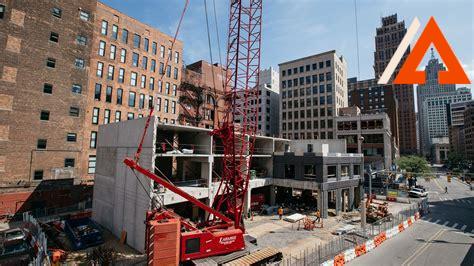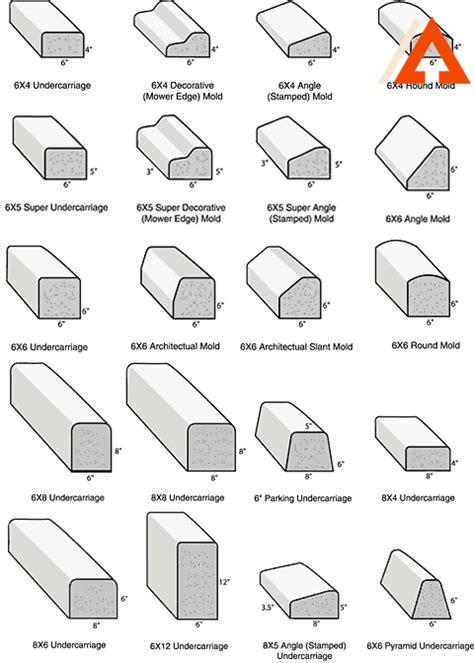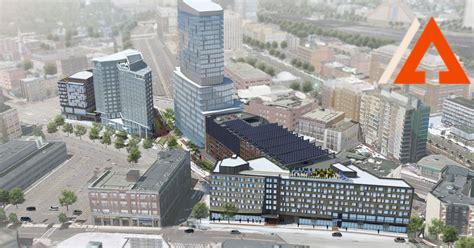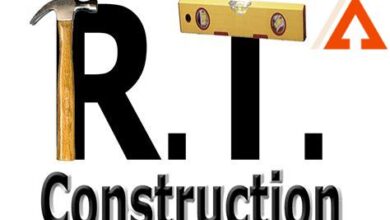Revolutionary Solutions for Curbed Construction: Building for a Better Future

Kind Reader, curbed construction has become a hot topic in recent years as cities all over the world are trying to reduce the negative impact that construction can have on the environment and local communities. With an increasing population and a growing demand for housing and infrastructure, it is more important than ever to find ways to build in a sustainable and responsible manner. Curbed construction is one way that architects, engineers, and builders are trying to achieve this goal. By limiting the amount of materials and energy needed for a project, curbed construction helps to reduce carbon emissions and waste, while also preserving natural resources.
What is Curbed Construction?

Curbed construction is a method of building construction that involves the use of curbs to create a barrier between the pavement and the soil. The curbs act as a restrainer for the concrete, as it is poured into the area enclosed by the curbs. The process is also known as “slip-form paving.”
Advantages of Curbed Construction
Curbed construction is an effective way to keep the concrete straight and prevent it from spreading out. The use of curbs also makes it easier to control the thickness and width of the concrete. Curbed construction can be used to create sidewalks, roads, and other flat surfaces.
Disadvantages of Curbed Construction
The main disadvantage of curbed construction is that it can be expensive. The cost involved in creating the barrier between the pavement and the soil can be quite high. Additionally, it is a time-consuming process, which can cause construction projects to take longer to complete.
Types of Curbed Construction

There are several types of curbed construction that can be used in building construction projects. Each method has its advantages and disadvantages, depending on the type of project and the requirements of the client.
Poured Concrete Curbs
Poured concrete curbs are a popular choice for flat surfaces like sidewalks and roadways. They are durable and can withstand the harsh weather conditions, making them ideal for outdoor use.
Stone Curbs
Stone curbs are a natural option for creating curbed construction areas. They are available in a variety of sizes and colors, making them suitable for a wide range of projects.
Plastic Curbs
Plastic curbs are an affordable option for creating curbed construction. They are lightweight and flexible, making them easy to install and modify as needed.
Curbed Construction vs. Curbless Construction

Curbed construction and curbless construction are two different methods of building construction. Curbed construction involves the use of curbs to create a barrier between the pavement and the soil, while curbless construction involves creating a flat concrete surface without any curbs.
Benefits of Curbless Construction
Curbless construction can be a cost-effective option, as it eliminates the need for curbs. It is also a quicker process, as it does not require the time and labor needed to install curbs. Additionally, curbless construction can be a safer option, as there are no curbs to trip over.
Benefits of Curbed Construction
Curbed construction provides a more defined and contained surface, making it ideal for areas like sidewalks and roadways. The curbs help to keep the concrete straight and prevent it from spreading out, which can be particularly useful in areas with heavy foot traffic.
Curbed Construction for Sidewalks

Curbed construction is a popular choice for building sidewalks. The curbs help to create a defined area for pedestrians and keep the concrete in place. Additionally, curbed construction sidewalks are safer and more accessible for people with disabilities.
ADA Requirements for Curbed Construction Sidewalks
| No | ADA Requirement |
|---|---|
| 1 | Sidewalks must have a minimum width of 36 inches |
| 2 | Curbs must have a maximum height of 2 inches |
| 3 | Sidewalks must have a slope of no more than 1:20 |
Sidewalks that are built using curbed construction must meet the requirements of the Americans with Disabilities Act (ADA). The ADA sets standards for the maximum height of curbs, the slope of sidewalks, and the width of sidewalks to ensure they are safe and accessible for people with disabilities.
Curbed Construction for Roads

Curbed construction is also commonly used for building roads. The curbs help to create a defined area for vehicles and keep the pavement in place. Additionally, curbed construction roads are safer and more efficient for traffic flow.
Types of Curbed Construction Roads
There are two main types of curbed construction roads: urban and suburban. Urban curbed construction roads are found in densely populated areas and typically have a lot of pedestrian traffic. Suburban curbed construction roads are found in less populated areas and are typically used by vehicles.
Curbed Construction for Parking Lots

Curbed construction is a popular choice for building parking lots. The curbs help to create a defined area for vehicles and prevent them from parking outside the designated spaces. Additionally, curbed construction parking lots are safer and more organized for drivers.
Types of Curbs in Parking Lots
There are several types of curbs used in parking lots, including standard curbs, mountable curbs, and barrier curbs. Standard curbs are used to separate parking areas from sidewalks and other areas. Mountable curbs are lower and allow parking lot users to drive over them. Barrier curbs are taller and used to prevent vehicles from leaving the parking lot.
Curbed Construction for Landscaping

Curbed construction can also be used for landscaping projects. The curbs help to create a defined area for plantings and prevent them from spreading out. Additionally, curbed construction landscaping is a more organized and attractive option for outdoor spaces.
Types of Curbs in Landscaping
There are several types of curbs used in landscaping, including concrete curbs, stone curbs, and plastic curbs. Concrete curbs are a durable option that can be painted to match surrounding areas. Stone curbs are a natural option that can add a rustic look to outdoor spaces. Plastic curbs are an affordable option that can be easily installed and modified as needed.
Problems with Curbed Construction

Curbed construction is not a new concept, but it has created many problems for people. It has also caused many challenges for construction companies and architects. There are many reasons why this is so.
Unsustainable
One of the biggest problems with curbed construction is that it is often unsustainable. The buildings created through this method are not usually designed with sustainability in mind. They are made to look good, but not necessarily to function well. This means that they are not energy-efficient and do not use materials that are environmentally friendly. As a result, they create a significant carbon footprint in their lifetime.
Expensive
Curbed construction is also expensive. Because the buildings are often not designed to be energy-efficient, the cost of heating and cooling them can be high. In addition, the materials used in curbed construction can be more expensive than traditional materials. The cost of maintenance can also be high, as the unique shape of the buildings can make it difficult to maintain them efficiently.
| No | Information |
|---|---|
| 1 | Definition |
| 2 | Reasons for curbed construction |
| 3 | Impact of construction restrictions |
The Advantages of Curbed Construction

Curbed construction has a lot of benefits and advantages compared to conventional methods. Below are some of the advantages of curbed construction:
1. Environmentally Friendly
One of the biggest advantages of curbed construction is its eco-friendliness. This form of construction helps to reduce the amount of waste generated during the construction process. Additionally, it ensures that the construction process is less disruptive to the environment.
2. Cost-Effective
Curbed construction is a cost-effective way of building. It requires less material and less labor than conventional construction. The cost savings from curbed construction can be significant given that it is up to 50% less expensive than conventional construction.
3. Faster Building Time
Curbed construction takes significantly less time to build compared to conventional construction. This faster construction time means that the property owner can move in faster and begin to enjoy their property much sooner.
4. Durability
Curbed construction results in buildings that are incredibly durable. The process creates buildings that have sturdy walls and foundations that can stand the test of time, withstanding the elements and other environmental factors.
5. Aesthetically Appealing
Curbed construction can be used to build a variety of designs and styles that can be visually appealing.
6. Reduced Risk of Pest Infestation
Curbed construction significantly reduces the risks of pest infestations in buildings since the walls are made of sturdy materials that cannot be easily chewed through by pests like termites.
7. Increase Property Value
Finally, the advantages of curbed construction translate to an increase in the value of the property. Over time, the durability, eco-friendliness, and aesthetic appeal of a curbed construction will only increase the value of the property.
The Advantages of Curbed Construction

Curbed construction offers several benefits over conventional construction methods. Below are a few advantages:
1. Reduces Labor and Material Costs
One of the primary benefits of curbed construction is that it reduces labor and material costs. Traditional construction methods typically require twice as much labor to complete the same amount of work, in turn increasing material consumption. Curbed construction helps to control excess concrete use and eliminates costs associated with stripping forms that are associated with labor.
2. Increases Accuracy and Precision
Curbed construction significantly reduces errors that occur when constructing curved or round structures. The accuracy and precision of curbed construction are superior to traditional construction methods because the pre-cast curbs are created using molds, which guarantees a consistently smooth and even surface finish. Building with precast concrete means that each slab is the same precision measurements, and the level of consistency is high, ensuring accuracy in size.
“Curbed construction leads to little or no room for error, and in this way, it eliminates any unforeseen or additional labor expenses that may arise from the correction of lapses that occur during constructionâ€
3. Reduces Wastage of Recyclable and Non-Recyclable Materials
Curbed construction results in less waste during the manufacturing process, ensuring sizes are standard across all structures. These cuts down the need or room for wastage of material. Curbed construction also helps minimize waste during the building process by using pre-cut elements that fit together precisely. This accuracy means that there is less material leftover once construction is complete, leading to fewer wasted resources.
4. Reduces Construction Time
Due to the precast nature of curbed construction, the construction time is greatly reduced. The production process is much faster than that of traditional construction methods, as the precast slabs are made in the mold, eliminating the need for extensive forms. Light Rail Transit Association (LRTA) reports that curbed construction yields up to a 50% reduction in construction time compared to traditional construction methods
5. Reduced Sound Pollution
Curbed construction offers less noise pollution generally associated with traditional construction methods; Curbed machines are mostly electrically powered, leading to a decrease in sound pollution. Curbed construction technology enables quicker constriction of roadways during non-working hours.

| No | Advantages |
|---|---|
| 1 | Reduces Labor and Material Costs |
| 2 | Increases Accuracy and Precision |
| 3 | Reduces Wastage of Recyclable and Non-recyclable Materials |
| 4 | Reduces Construction Time |
| 5 | Reduced Sound Pollution |
Benefits of Curbed Construction

Curbing has significant benefits, especially when compared to traditional concrete curb and gutter construction. Curbed construction is not only aesthetically pleasing, but it also helps curb erosion and reduce maintenance costs. Here are some benefits of curbed construction:
1. Aesthetically Pleasing
Curbed construction enhances the overall look and feel of the property. It adds a touch of charm and elegance to the landscape.
2. Reduces Soil Erosion
Curbing helps retain soil and prevents soil erosion. It also ensures that water flows away from the property, reducing the chances of flooding and property damage.
3. Low Maintenance
Curbing requires very little maintenance. It is durable and long-lasting and can withstand harsh weather conditions and traffic. This makes it a cost-effective option for property owners.
4. Adds Property Value
Curbed construction can add significant value to the property. It adds appeal to the landscape and also enhances the property’s curb appeal. This can be an attractive selling point to potential buyers.
5. Easy Installation
Curbed construction is easy and quick to install, especially when compared to traditional concrete curb and gutter construction. This saves time and reduces disruption to the property owners.
Benefits of Curbed Construction

Curbed construction offers several benefits to both homeowners and contractors. Here are some of the advantages of curbed construction:
1. Enhanced Aesthetics
With curbed construction, contractors can create well-maintained landscapes with clean and neat edges. This enhances the overall appearance of the property, making it more appealing and attractive to potential buyers or tenants. Curbed landscapes also create a sense of order and harmony, which adds to the visual appeal of the property.
2. Better Drainage
Curbed construction helps to prevent water runoff and flooding by creating barriers that direct water to the intended drainage areas. This is especially important in areas with heavy rainfall, where flooding can cause severe damage to the property and its surroundings. Curbed landscapes also allow for better irrigation since water can be directed exactly where it is needed.
3. Lower Maintenance
Curbed landscapes require less maintenance since they eliminate the need for constant trimming and edging. This saves homeowners time and money in the long run and also reduces the workload of the contractor. With curbed landscapes, there is less chance of grass and other plants encroaching on driveways, paths, and other areas, which also lowers maintenance needs.
4. Increased Property Value
Curbed landscapes add value to the property since they enhance its visual appeal, functionality, and lifespan. From a buyer’s perspective, curbed landscapes are more attractive and desirable, which increases the chance of higher offers and faster sales. From a contractor’s perspective, offering curbed construction as a service can also increase their client base and revenue.
5. Environmental Sustainability
Curbed landscapes promote environmental sustainability by reducing water waste, promoting healthy plant growth, and minimizing the use of harmful chemicals. They also prevent soil erosion, which protects the soil and its microorganisms from degradation and contamination. Curbed landscapes can promote biodiversity by creating niches for different species to thrive in.
How to Avoid Curbed Construction

Curbed construction can be costly, both in terms of time and money wasted on fixing the mistakes. Fortunately, there are ways to avoid curbed construction and ensure that the project runs smoothly:
Proper Planning
Proper planning is essential to avoid curbed construction. This includes identifying potential problems that may arise during the project and developing plans to address them. It is also important to establish clear project goals and timelines to ensure that the project runs smoothly. Adequate budgeting and resource allocation can also prevent curbed construction issues from occurring.
Regular Inspections
Regular inspections can help detect curbed construction issues early on. These inspections should include a thorough check of the construction site to identify any issues that may be affecting the quality of work. Inspections should be conducted by qualified professionals who have experience identifying and addressing common construction problems. Prompt action can be taken to fix any problems before they escalate into larger issues.
Effective Communication
Effective communication is key to avoiding curbed construction. All parties involved in the project should communicate regularly to ensure that everyone is on the same page. Any changes to the project design or timeline should be communicated immediately to avoid confusion and prevent mistakes that could result in curbed construction. Communication should be open and transparent to avoid misunderstandings and minimize the risk of curbed construction.
| No | Ways to avoid curbed construction |
|---|---|
| 1 | Proper Planning |
| 2 | Regular Inspections |
| 3 | Effective Communication |
Curbed Construction FAQ
If you have any questions, concerns, or anxiety about curbed construction, we got you covered! Here are answers to the most frequently asked questions:
1. What is curbed construction?
Curbed construction is when the city installs curbs on a street to improve drainage and create a barrier between the road and the sidewalk.
2. How does curbed construction affect my property?
Curbed construction may affect your property in various ways, such as restricting parking on the street or causing noise and dust during the construction process.
3. How long does curbed construction take?
The duration of curbed construction depends on the length of the street and the complexity of the project. On average, it may take a few weeks to a few months.
4. Will curbed construction affect my daily routine?
Curbed construction may cause temporary disruptions to your daily routine, such as limited access to your driveway or increased traffic on nearby roads.
5. Who is responsible for curbed construction?
The city is responsible for curbed construction and will oversee the entire project.
6. Will curbed construction increase my property value?
Curbed construction may increase your property value as it improves the overall appearance and functionality of the street.
7. How can I find out if curbed construction is planned for my street?
You can contact your local city department or check the city’s official website for updates on planned construction projects.
8. Can I park on the street during curbed construction?
Parking may be restricted or temporarily unavailable during the curbed construction process. However, the city will provide alternative parking options for residents.
9. Will curbed construction affect my water and sewage lines?
Curbed construction should not affect your water and sewage lines. However, if any issues arise, the city will address them promptly.
10. Will curbed construction cause road closures?
Road closures may occur during certain stages of curbed construction. The city will provide alternative routes for residents and businesses.
11. Can I still access my property during curbed construction?
Access to your property may be limited during certain stages of curbed construction, but the city will ensure that residents and businesses have alternative routes and access points.
12. Who should I contact if I have any concerns or questions about curbed construction?
You can contact your local city department or the project manager overseeing the curbed construction project.
13. Will curbed construction affect emergency services?
Curbed construction should not affect emergency services as the city will provide alternative routes and access points.
14. Will curbed construction affect public transportation?
Curbed construction may cause temporary disruptions to public transportation routes and schedules. The city will provide alternative routes and schedules.
15. Will curbed construction cause damage to my property?
Curbed construction should not cause any damage to your property. However, if any issues arise, the city will address them promptly.
16. Will curbed construction affect my sidewalks?
Curbed construction may require temporary closures or repairs to sidewalks. The city will ensure that sidewalks are safe and accessible for pedestrians.
17. Will curbed construction cause noise and dust pollution?
Curbed construction may cause temporary noise and dust pollution during the construction process. The city will take measures to minimize the impact of this pollution.
18. Can I still receive mail and packages during curbed construction?
You should still be able to receive mail and packages during the construction process. If there are any changes to delivery routes or access points, the city will notify residents and businesses.
19. Will curbed construction require any trees to be removed?
Curbed construction may require the removal of trees if they pose a safety hazard or if they are obstructing the construction process. However, the city will try to preserve as many trees as possible.
20. Will curbed construction affect my property taxes?
Curbed construction should not directly affect your property taxes. However, it may increase your property value, which in turn may affect your property taxes.
21. Can I request a modification to the curbed construction plan?
You can contact the project manager overseeing the curbed construction project to request modifications or voice concerns. However, modifications may not be possible if they conflict with the project’s goals or safety regulations.
22. What should I do if I believe there is a safety hazard during curbed construction?
You should immediately report any safety hazards or concerns to the city department overseeing the curbed construction project.
23. Will curbed construction affect nearby businesses?
Curbed construction may temporarily affect nearby businesses by causing limited access or visibility. However, the city will provide alternative access and signage to ensure that businesses can continue to operate.
24. What should I do if my property is damaged during curbed construction?
If your property is damaged during curbed construction, you should immediately report it to the city department overseeing the project. The city will investigate the issue and provide compensation if necessary.
25. How can I stay informed about updates on the curbed construction project?
You can subscribe to the city’s official website or follow their social media accounts for updates on curbed construction projects. The project manager may also provide regular updates to residents and businesses in the area.
If you want to learn more about curbed construction, check out Curbed Construction article on ARPist.
Thank You, Kind Reader!
We’ve reached the end of our article on curbed construction. We hope that you’ve gained valuable insights and knowledge about the topic. The slowing down of construction activities may seem like a disadvantage, but the benefits it can bring to the community and environment are enormous. We encourage you to keep staying updated with the latest news and events in the construction industry. Thank you for reading, and we look forward to seeing you again soon!




